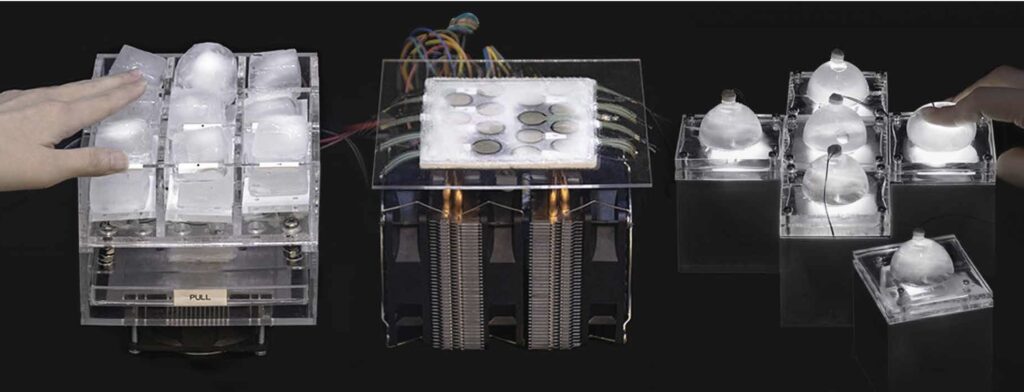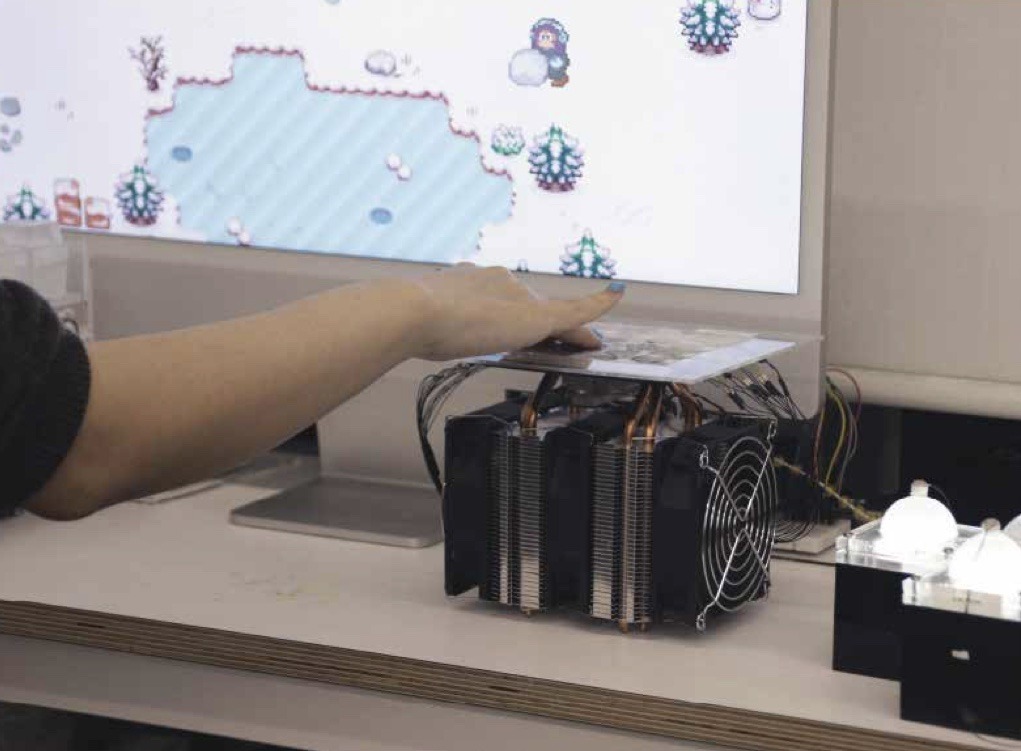
Nintendo’s Joy-Con controller system is very innovative and generally well-regarded, with one major exception: stick drift. That’s a reliability issue that eventually affects a large percentage of Joy-Cons, to the frustration of gamers. But what if that was intentional and gamepads were designed to deteriorate in short order? That’s the idea behind ICY Interfaces.
Yoonji Lee and Chang Hee Lee at KAIST (Korea Advanced Institute of Science & Technology) created three devices under the ICY Interfaces umbrella: MeltPress, FrostPad, and IceSquish. Each incorporate ice — literal frozen water — in a manner meant to make use of the material’s ephemeral nature. Imagine, for instance, a gamepad with buttons that melt at an increasing rate as you touch them. Or another gamepad with buttons that don’t become accessible until a protective sheet of ice melts away. The ICY Interfaces are experiments in this kind of dynamic design.
Each device contains an Arduino Mega 2560 board to read button presses and control additional hardware, like Peltier coolers. Those are thermoelectric solid-state heat pumps capable of refreezing the ice after it melts.

The researchers developed a simple game, called Iceland: Frozen Journeys, to work with ICY Interfaces. They built that game in Processing in order to take advantage of its strong compatibility with Arduino boards and the Arduino IDE. The game challenges players to build snowmen, capitalizing on the ice theme.
MeltPress has an array of buttons with key caps made of ice. FrostPad has a surface with several capacitive touch pads covered in a layer of ice. IceSquish has buttons made of ice-filled silicone balls, which don’t become flexible enough to press until they’ve melted a bit. All of them make use of ice in an interesting way to explore new gameplay ideas.
Image credit: Y. Lee et al.
